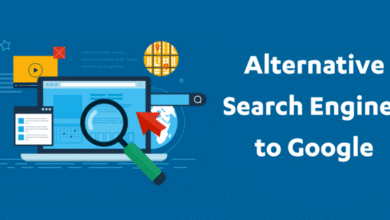
In today’s digital landscape, chatbots have emerged as powerful tools for businesses to enhance customer engagement and streamline operations. A well-designed chatbot strategy can provide significant benefits, including improved customer satisfaction, increased efficiency, and cost savings. However, creating an effective chatbot strategy requires careful planning and execution. In this article, we will explore nine essential steps to help you create a winning chatbot strategy that delivers results.
Read More: The 15 Biggest Artificial Intelligence (AI) Trends In 2023
Understanding Chatbots

Before diving into the strategy creation process, it’s important to have a clear understanding of what chatbots are and how they work. Chatbots are computer programs designed to simulate human conversation through text or voice interactions. They leverage artificial intelligence (AI) technologies, such as natural language processing (NLP) and machine learning, to understand user inputs and provide relevant responses. By automating repetitive tasks and delivering instant support, chatbots can revolutionize customer service and streamline business operations.
Defining Your Objectives
The first step in creating a winning chatbot strategy is to define your objectives. Clearly articulate what you aim to achieve with your chatbot. Are you looking to improve customer support, generate leads, or automate sales processes? By setting specific goals, you can align your chatbot strategy with your overall business objectives and measure its success effectively.
Identifying Your Target Audience
Understanding your target audience is crucial for developing a chatbot strategy that resonates with your users. Conduct thorough market research to identify the demographics, preferences, and pain points of your target audience. This information will help you tailor your chatbot’s language, tone, and functionalities to deliver personalized and relevant experiences.
Designing the Chatbot Flow
The chatbot flow refers to the conversational path that users follow when interacting with the chatbot. Designing a logical and user-friendly chatbot flow is essential for a seamless user experience. Start by mapping out the different user scenarios and create a flowchart that outlines the chatbot’s responses and actions at each step. Consider the potential user inputs and ensure that the chatbot can handle different types of queries and provide accurate and helpful responses.
Choosing the Right Platform
Selecting the right platform is crucial for the success of your chatbot strategy. Evaluate the available options and choose a platform that aligns with your requirements and technical capabilities. Some popular chatbot platforms include Facebook Messenger, Slack, WhatsApp, and website chat widgets. Consider factors such as integration capabilities, scalability, and user reach when making your decision.
Building and Testing the Chatbot

Once you have defined the chatbot flow and selected the platform, it’s time to build and test your chatbot. Depending on the platform chosen, you may use development frameworks, visual builders, or chatbot development platforms to create your chatbot. Ensure that the chatbot’s responses are accurate, informative, and conversational. Conduct extensive testing to identify and fix any bugs or usability issues before launching the chatbot.
Deploying the Chatbot
After thorough testing, it’s time to deploy your chatbot and make it accessible to your users. Integrate the chatbot with the chosen platform and ensure a smooth deployment process. Communicate the availability of the chatbot to your target audience through various channels, such as your website, social media profiles, and email newsletters. Provide clear instructions on how users can access and interact with the chatbot.
Monitoring and Optimization
Once your chatbot is live, it’s important to monitor its performance and continuously optimize its capabilities. Analyze user interactions, track key metrics, and gather feedback to identify areas for improvement. Use analytics tools to gain insights into user behaviour, popular queries, and user satisfaction levels. Based on this data, make iterative improvements to enhance the chatbot’s performance and deliver a better user experience.
Read More: How to Use ChatGPT-4 for Free on Microsoft Bing
FAQ’s
Q1: Can chatbots be integrated with existing customer support systems? Yes, chatbots can be integrated with existing customer support systems to automate repetitive tasks, provide instant responses, and assist customer service representatives.
Q2: Are there any limitations to chatbot capabilities? While chatbots have advanced significantly, they may still face limitations in understanding complex queries or emotions. However, continuous advancements in AI technologies are expanding their capabilities.
Q3: How can I measure the success of my chatbot strategy? You can measure the success of your chatbot strategy by tracking metrics such as user satisfaction ratings, response times, conversion rates, and cost savings compared to traditional methods.
Q4: Can chatbots support multiple languages? Yes, chatbots can support multiple languages by leveraging language processing capabilities. This enables businesses to engage with a global audience and provide localized experiences.
Q5: Are there any security considerations when using chatbots? Security is an important consideration when implementing chatbots. Ensure that the chatbot follows best practices for data protection, authentication, and secure communication to safeguard user information.
Conclusion
Creating a winning chatbot strategy requires careful planning and execution. By following the nine steps outlined in this article, you can develop a chatbot strategy that aligns with your business objectives and delivers valuable experiences to your users. Remember to continuously monitor and optimize your chatbot to ensure its effectiveness over time. Embrace the power of chatbots and unlock new opportunities for customer engagement and operational efficiency.








2 Comments